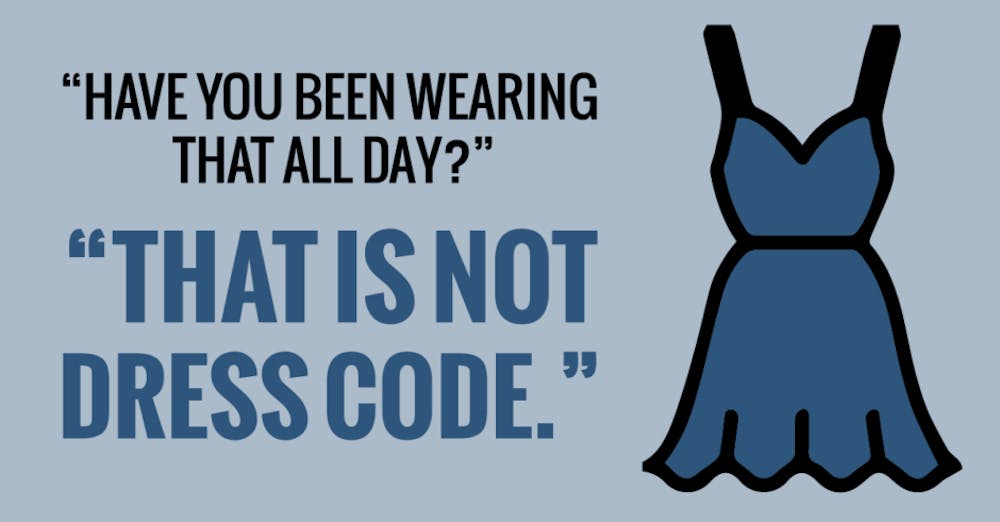There is no doubt that women have made advancements in society. In 1920, women won the right to vote. In 1972, Title IX prohibited the discrimination of women in education programs. In 2016, the Democratic Party nominated Hillary Clinton for the presidency – the first female to be nominated by a major party. Despite these advances, women still face obstacles that men do not – and this inequality manifests itself in many areas of life.
Oversexualization: Monitoring Women’s Bodies Starts Young
“Have you been wearing that all day?” She turned her head to see her school’s vice principal examining her outfit. Kendall Floto, an 18-year-old Angola High School graduate, remembers she felt good in what she was wearing. It was spring, it was hot, and she took the opportunity to pull a sundress from her closet.
“That is not dress code.” The dress, dark blue with flowers adorned, went down past the length of her fingertips—a common aspect of appropriate dress code. It wasn’t the length that was the problem. It was her shoulders. The sleeveless dress, although the strap length was more than four fingers wide, put Kendall’s shoulders on display.
Angola High School has a dress code like any other public school. And like any other school, the dress code is in place in attempt to create the best learning environment for students. Specifically written on its website: “Items that would be considered detrimental to the learning environment or potentially a safety issue are not permitted. Chains and spiked jewelry are not permitted. Sunglasses, hats, bandanas, and other similar headwear are not allowed during the instructional day. No dark or colored glasses are permitted unless prescribed by a physician or optometrist.”
To continue, visit ballbearingsmag.com.





